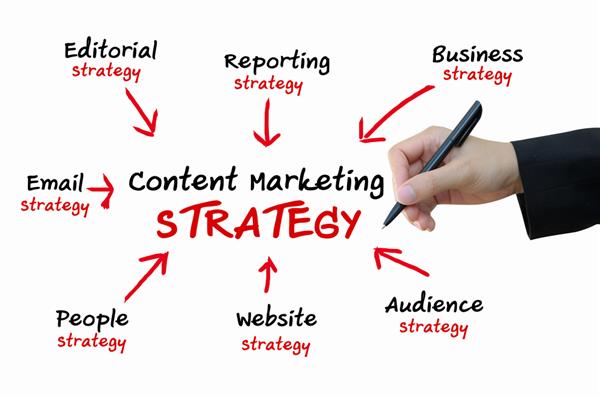When people watched the Budweiser Super Bowl ad of the Clydesdale running down a Chicago street to reunite with its trainer, they noticed. When an Apple executive spouted off specs of their newest products at a major news conference, companies listened. Ford Motor Co. tweeted out their own specs of their products using a unique hashtag #wegotthat2. That’s the power of marketing without the hard sell. Budweiser tweeted and encouraged people at the end of the ad to help name the new foal in the commercial with the hashtag #Clydesdales. By the way, neither of those marketing efforts say “buy our product.”
2013 Official Super Bowl Commercials ( Budweiser – The Clydesdales)
by FeaturedBestVideos via YouTube
Why? That’s the lure of content marketing vis-a-vis storytelling.
“Content marketing is the most influential and authoritative form of marketing for businesses today. Every component of a company’s branding, client engagement, social media identity, inbound marketing strategy, website influence and more depends on the consistency, quality and creativity of the content produced,” said Marie Alonso, Content Branding and Social Media Strategist at Miles Technologies.
Content marketing cannot get off the ground without buy-in from the CEO and corporate leadership. So how do you get them to understand the value of content marketing for your business? Content marketing goes beyond how much referral traffic or click-throughs it gets. The CEO plays a role as well.
“The key is to determine what the ‘value’ is and then seek the proof. … The proof of value is measured in the currency of the benefactor. Content marketing should not be simply measured in ROI,” said Chris Lorence, Executive Vice President/Chief Marketing Officer of the Independent Community Bankers of America.
Chris Lorence, Executive Vice President/Chief Marketing Officer of the Independent Community Bankers of America, said CEOs set the direction.
“The CEO is the visionary; the person charged with setting the direction and ensuring the overall mission of the organization is fulfilled. The organization’s voice is developed and parlayed through content found on its website, marketing materials, research documents and even emails,” he said. “As the leader in charge of the organization’s success, it’s imperative the ‘voice’ matches the mission. A CEO can stand in front of a podium and give the best speech ever, but if the overall impression people have when they read material meant to engage falls flat or is out of alignment with the CEO’s message, enthusiasm declines,” he said.
Marketing Needs Support
“Content marketing’s really hard to do if it’s only championed by one person. It has to be an effort that’s championed all the way up the hierarchy. So everybody has to believe in it,” said Yvonne Lyons, Vice President of Content Marketing for Right Source Marketing.
To carry out that consistent voice with a consistent message takes teamwork. The marketing goals are ultimately the company’s business objectives because the whole point is to find leads and make money. Thus, the company’s goals and accountability should not be just the marketing department’s burden.
“Content marketing’s really hard to do if it’s only championed by one person. It has to be an effort that’s championed all the way up the hierarchy. So everybody has to believe in it. It has to be a team effort, and so there has to be buy-in across the board. You have to have willingness depending on the size of the organization,” said Yvonne Lyons, Vice President of Content Marketing for Right Source Marketing.
Try building leverage within the corporate leadership. Seeking out a champion in the C suite who can help you get the CEO on board isn’t a bad idea. Alonso said companies need to understand that a content-driven marketing plan is a mandate and that a director of sales will lend strong support behind any content marketing campaign — knowing it will trigger brand recognition, lead generation and even a boost to organic SEO.
“Content marketing is very much about building a better business. The more relevant, impactful information a business shares, the higher the business rises in terms of market leadership and industry influencer status,” she said. “Content can be everything from blogs and social media updates to inbound marketing products designed to generate leads. Content marketing is creative, but it is also disciplined, in its mission to promote the branding, products, services and philosophy of an organization. The C suite must take notice, or their competitors will and then it will be a game of catch up — never a good position to be in when it comes to marketing.”
Making the Case for Content
Whether it’s for a B2B or B2C, companies still need prospective customers to grow their business. Engaging people with content marketing is one long-term way to do that.
Alonso cited the 2014 Forrester Research/Business Marketing Association/Online Marketing Institute study, “Compare Your B2B Content Marketing Maturity“. She said that while 51 percent of B2B marketing leaders rate their content marketing practices as very mature, an overwhelming 85 percent fail to connect content activity to business value — and, as a result, fail to retain customers or win their long-term loyalty.
“Simply put, B2B marketers have more work to do when it comes to using content to consistently deliver a valuable exchange of information with prospective buyers. Still, content marketing is well accepted in the B2B and B2C environment as being a prime deliverable for cross-platform digital marketing campaigns. Businesses on all levels realize content enables them to inspire, motivate and engage clients and potential clients on a mass level across multiple digital mediums, boosting brand visibility and fueling lead generation,” Alonso said.
That said, what reasons should a B2B give the top brass to build the case for content marketing?
Lorence said building content that appeals to a target audience will:
1. Reinforce both internally and externally that we know who our customers are. We speak to them — not as strangers who we take money from — but as valuable partners who know something about [our industry].
2. We spend less time and resources hoping to engage someone who might connect based on something that may have caught their eye. Content marketing designed for a specific audience is alluring and captivates, resulting in better response.
3. You annoy less people who are spammed daily with messaging they aren’t interested in or consume.
Determine the Content’s Value
Lorence offers great insight to determine content marketing’s worth. The value is defined by what benchmarks are set and met, but the company must first set those parameters.
“The key is to determine what the ‘value’ is and then seek the proof. For example, a salesman may measure ‘value’ by the number of [quick] closes [or] hot prospects that result from a uniquely targeted campaign. A membership organization may measure their value based on the retention numbers resulting from a renewal outreach program. The proof of value is measured in the currency of the benefactor. Content marketing should not be simply measured in ROI,” he said.
Getting the right measurements in place will help avoid setting content marketing up for failure. Lorence said the C suite understands relationships build trust and trust translates into dollars.
“Customers don’t want to be sold, they want to be featured. They don’t want a long list of what the organization has determined are the best reasons to buy, they want to an emotional connection based on seeing someone like themselves succeed,” he said.
That’s where engaging with content comes in. He said that when the marketing or communications team pitches the need for investment in content, they need to speak less about cost and more about reinforcing or initiating relationships through targeted content aimed at fortifying trust.
If All Else Fails
“The market is just flooded with information right now. So [if] you are one of those companies [that] is just a black hole of information, then you’re just at a loss,” Lyons said.
When trying to convince your CEO that content marketing works and a long-term investment, speak his or her language. Lorence said that it doesn’t hurt to find examples that resonate well with your boss. “If he or she is personally engaged with a hobby or favors a particular brand, finding examples of content marketing that will help them relate to their own reactions will help bring clarity to what you’re planning to do for the organization,” he said.
There’s also that fear factor. If all else fails, be point-blank with your corporate leadership that content marketing matters: If you don’t do it, your competition will.
Marketing has changed a lot in the last 15 years. Lyons said marketing used to be an area that just spent money, but can now show more of an ROI. Customers do a lot more upfront research now well before buying. That’s where the opportunity lies for companies: to get in front of them during that process. She said people are shown to have spent 60-70 percent of their time doing research before they ever reach out and talk to a human about making a sales transaction.
“If you don’t provide education for leadership within your industry or your vertical about whatever it is you do or provide, then whoever your competition [is] will put that out there for readers to find; and those readers are searching for information for whatever it is they’re trying to purchase,” Lyons said. “So if you don’t provide it, your competition will and then those readers go to whoever provided them the best information. So if you’re not providing that, you’re putting yourself at a loss. The market is just flooded with information right now. So [if] you are one of those companies [that] is just a black hole of information, then you’re just at a loss.”
Click here to see how Rock Content can help you measure your content’s engagement and use that to achieve business goals.







